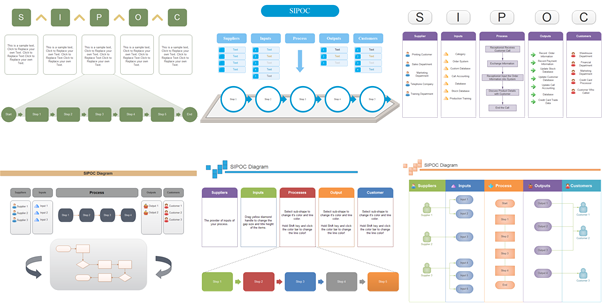Six Sigma is a set of techniques and tools for process improvement. It was introduced by engineer Bill Smith while working at Motorola in 1986.Jack Welch made it central to his business strategy at General Electric in 1995. Today, it is used in many industrial sectors.
Six Sigma seeks to improve the quality of the output of a process by identifying and removing the causes of defects and minimizing variabilityin manufacturing and business processes. It uses a set of quality management methods, mainly empirical, statistical methods, and creates a special infrastructure of people within the organization, who are experts in these methods. Each Six Sigma project carried out within an organization follows a defined sequence of steps and has specific value targets, for example: reduce process cycle time, reduce pollution, reduce costs, increase customer satisfaction, and increase profits.
The term Six Sigma originated from terminology associated with statistical modeling of manufacturing processes. The maturity of a manufacturing process can be described by a sigma rating indicating its yield or the percentage of defect-free products it creates. A six sigma process is one in which 99.99966% of all opportunities to produce some feature of a part are statistically expected to be free of defects (3.4 defective features per million opportunities). Motorola set a goal of "six sigma" for all of its manufacturing operations, and this goal became a by-word for the management and engineering practices used to achieve it
.Six Sigma as a Methodology: As Six Sigma has evolved, there has been less emphasis on the literal definition of 3.4 DPMO, or counting defects in products and processes. Six Sigma is a business improvement methodology that focuses an organization on:
- Understanding and managing customer requirements
- Aligning key business processes to achieve those requirements
- Utilizing rigorous data analysis to minimize variation in those processes
- Driving rapid and sustainable improvement to business processes.."
"..At the heart of the methodology is the DMAIC model for process improvement. DMAIC is commonly used by Six Sigma project teams and is an acronym for:
- Define opportunity
- Measure performance
- Analyze opportunity
- Improve performance
- Control performance.."
"...Six Sigma Management System: Through experience, Motorola has learned that disciplined use of metrics and application of the methodology is still not enough to drive desired breakthrough improvements and results that are sustainable over time. For greatest impact, Motorola ensures that process metrics and structured methodology are applied to improvement opportunities that are directly linked to the organizational strategy. When practiced as a management system, Six Sigma is a high performance system for executing business strategy. Six Sigma is a top-down solution to help organizations:
- Align their business strategy to critical improvement efforts
- Mobilize teams to attack high impact projects
- Accelerate improved business results
- Govern efforts to ensure improvements are sustained.."
"..The Six Sigma Management System drives clarity around the business strategy and the metrics that most reflect success with that strategy. It provides the framework to prioritize resources for projects that will improve the metrics, and it leverages leaders who will manage the efforts for rapid, sustainable, and improved business results.."

Tidak ada komentar:
Posting Komentar